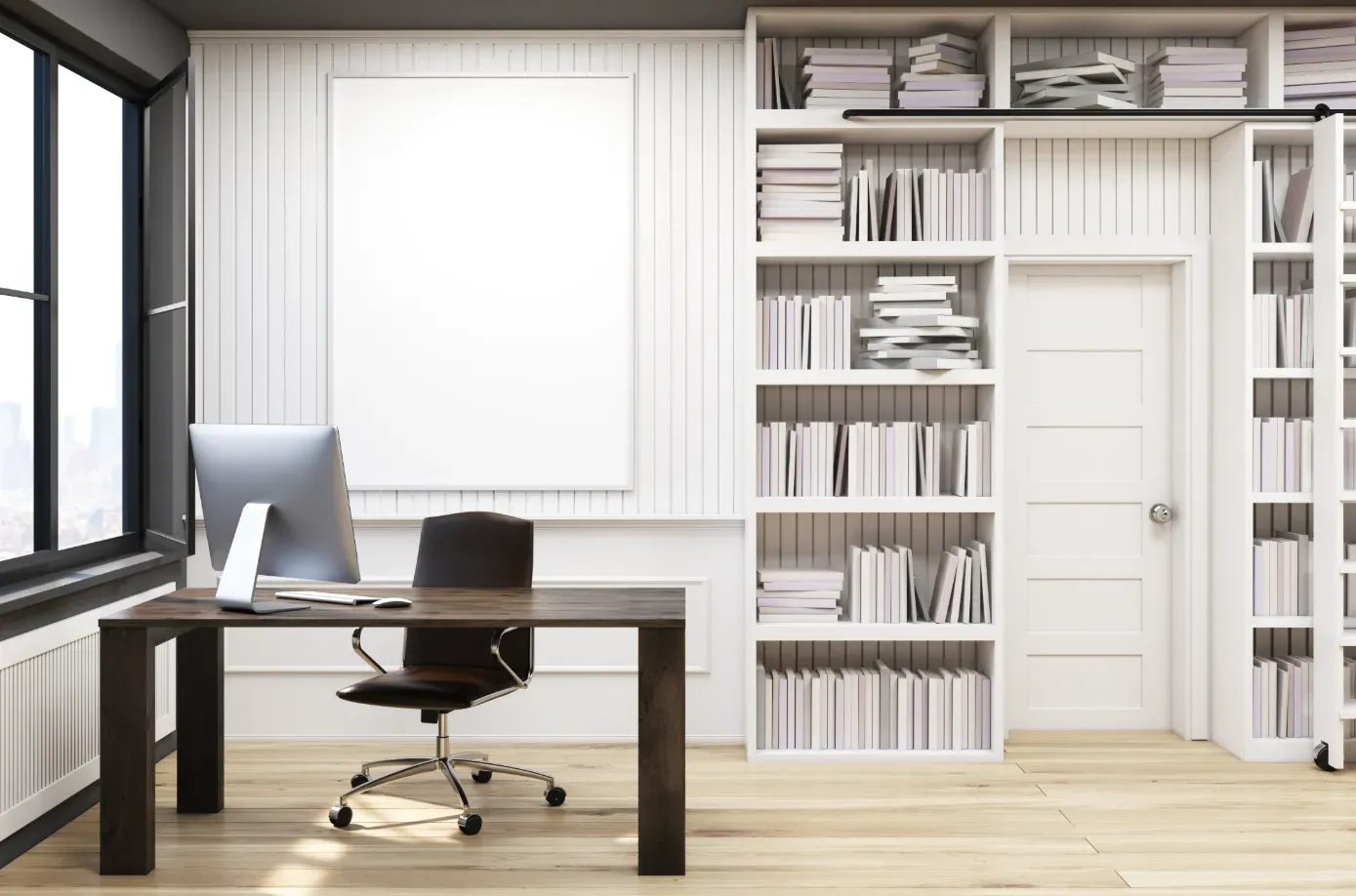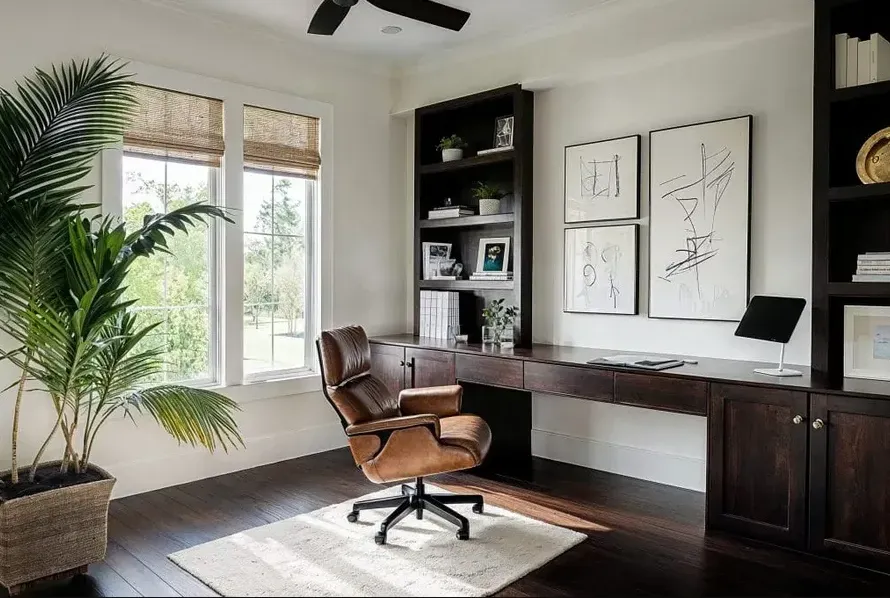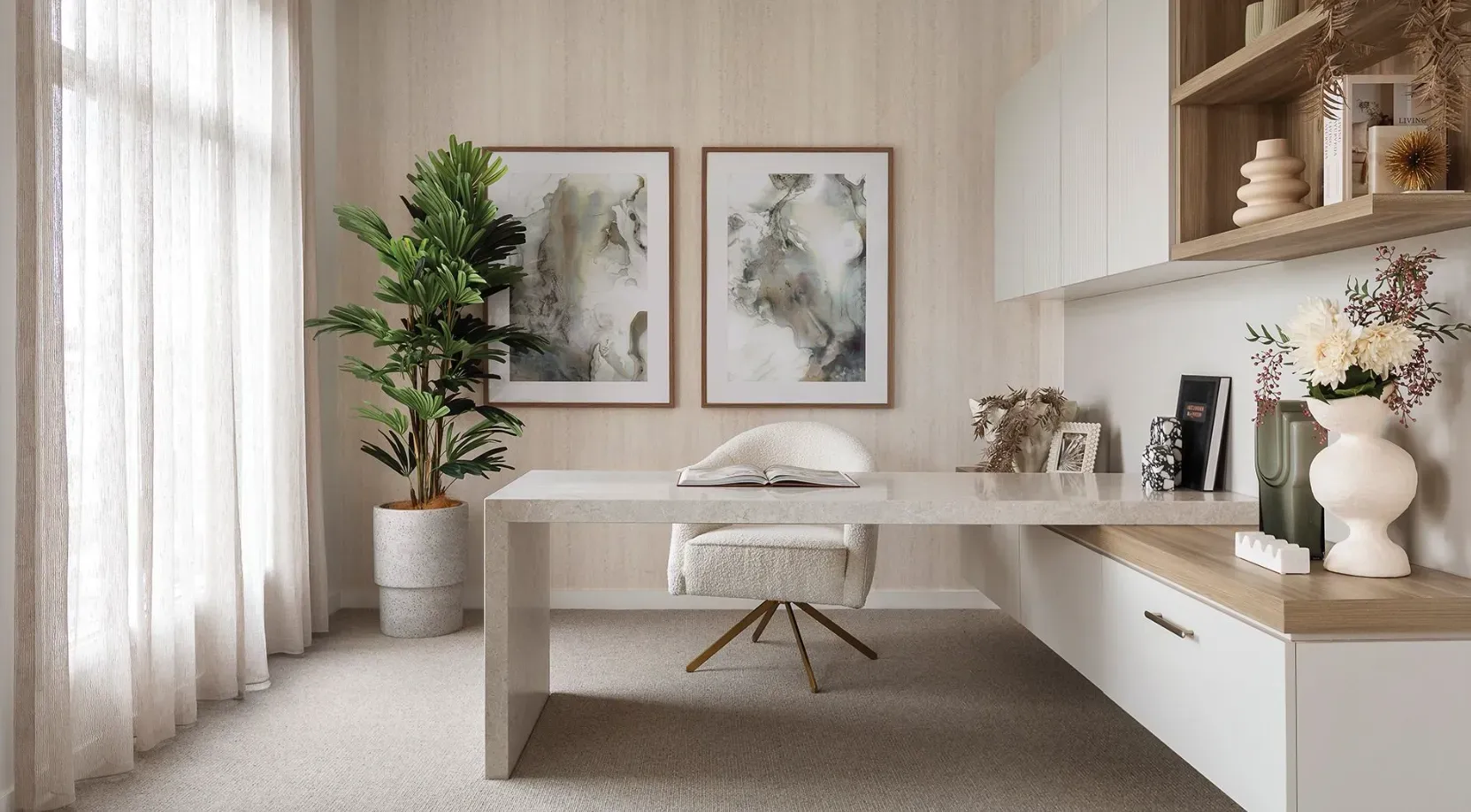Designing a Home Office That Actually Boosts Productivity: Beyond a Desk and a Chair

By
Shrusti Naik
Posted on August 25, 2025. 10 mins

Designing a Home Office That Actually Boosts Productivity: Beyond a Desk and a Chair
Introduction

The rise of hybrid and remote work in India has transformed the way we view our homes. What was once a spare room or even a quiet corner is now expected to function as a productive, inspiring, and distraction-free office. According to a 2024 survey by Indeed India, more than 60% of professionals feel their productivity is directly influenced by how well their home office is set up. Yet, most people still equate a “home office” with simply having a desk and a chair. The truth is, thoughtful design, incorporating ergonomics, psychology, and even culture, can make the difference between a space that drains your focus and one that fuels creativity and discipline.
Rethinking Ergonomics: Investing Beyond Furniture
Ergonomics is usually reduced to buying an adjustable chair, but the science goes much deeper. The height of your desk, the distance of your monitor, and even the angle of your wrists on the keyboard can determine whether you end the day energized or exhausted. The Indian market has also seen a surge in ergonomic products tailored for compact urban apartments, from wall-mounted sit-stand desks to modular chairs that provide lumbar support without consuming much space . Investing in ergonomics is not a luxury, it’s insurance against burnout, poor posture, and productivity dips. Might as well take a look at The Resurgence of Traditional Indian Architectural Elements in Modern Homes.
Lighting: The Unsung Hero of Productivity
Lighting is perhaps the most overlooked aspect of a home office. Natural light not only reduces eye strain but also has a proven impact on mental well-being, with studies from IIT-Delhi linking exposure to daylight to improved focus and lower stress. For homes with limited sunlight, layered artificial lighting, combining task lights, ambient ceiling fixtures, and warm accent lamps, can replicate the balance. The growing popularity of smart lighting systems in India allows workers to adjust brightness and color temperature throughout the day, mimicking natural circadian rhythms. This small detail can significantly enhance energy levels and prevent late-afternoon slumps. With all this, here is another way to enhance your home by Choosing the Right Color Palette for Each Room
Sound and Acoustics: Designing for Mental Clarity
A productive home office isn’t just about what you see, it’s about what you hear, or don’t. Noise pollution in Indian cities is a serious challenge, with urban decibel levels consistently exceeding WHO guidelines (Source: Mint, 2024). Simple design choices, like adding bookshelves, rugs, or acoustic panels, can soften sound. Even houseplants, beyond aesthetics, help reduce echo and absorb ambient noise. For professionals who attend frequent online meetings, investing in a noise-cancelling microphone or headphones can further insulate against distractions.
The Psychology of Space: Color, Layout, and Personalization
A well-designed office doesn’t just keep you comfortable; it keeps you motivated. Colors, for instance, can influence mood, blues and greens encourage calm concentration, while warmer shades like yellow can stimulate creativity. The layout also matters: facing a window may inspire, but for some, it might encourage distraction. The trick is designing for your personality and workflow. A minimalist desk might work for analytical jobs, while creative professionals often thrive when surrounded by personal artifacts, art, or vision boards. This personalization builds a subtle but powerful psychological link between the space and the habit of working effectively. Besides. here are some Design Choices That Can Actually Increase Your Property Value
Technology Integration: Building a Seamless Work Environment
Productivity today is as much about technology as it is about furniture. Inadequate Wi-Fi coverage, messy cables, or lack of charging ports can silently eat away at focus. With work-from-home likely to remain a long-term fixture in India’s urban economy (Source: Economic Times, 2025), investing in mesh Wi-Fi systems, concealed cable organizers, and docking stations is no longer optional. These upgrades reduce friction in daily tasks, ensuring your environment supports rather than interrupts your workflow. Also check out Fractional Ownership of Real Estate in India 2025
Biophilic Design: Bringing Nature into the Workspace
The pandemic popularized the concept of biophilic design, integrating nature into interiors. In India, where urban homes often feel cramped, even small gestures like potted plants, bamboo décor, or water elements can significantly reduce stress and enhance focus. Research by TERI (2024) suggests that workers surrounded by natural elements reported 15% higher well-being scores and lower instances of fatigue. A touch of greenery can transform your office into a restorative space rather than just a functional one. Besides, take a look at these Kid-Friendly Interiors That Aren’t an Eyesore
Conclusion

Designing a home office that truly boosts productivity goes far beyond buying a desk and chair. It requires attention to ergonomics, lighting, sound, psychology, technology, and even nature. Each element works like a puzzle piece, together creating a workspace that fuels rather than drains you. As India continues to redefine the future of work, investing in a thoughtful home office isn’t indulgence, it’s a strategic decision for long-term performance and well-being. For those in pursuit of their dream home, investment opportunities, or a sanctuary to call their own, Jugyah provides top housing solutions with its intelligent technology.
Frequently Asked Questions
Q1. What is the most important factor in designing a home office? While ergonomics is foundational, lighting and noise control are equally important for sustained productivity.
Q2. Do I need a separate room for a home office? Not necessarily. With modular furniture and smart design, even a corner in a living room or bedroom can be converted into an efficient workspace.
Q3. What colours are best for a home office? Cool tones like blue and green support focus, while warmer tones like yellow or orange may boost creativity.
Q4. How can I design a budget-friendly home office? Start with the basics, ergonomic seating, good lighting, and decluttered layout. Gradually add elements like plants or organizers.
Q5. Is biophilic design practical in Indian apartments? Yes, even a few potted plants or natural textures can bring the benefits of biophilic design without requiring large spaces.